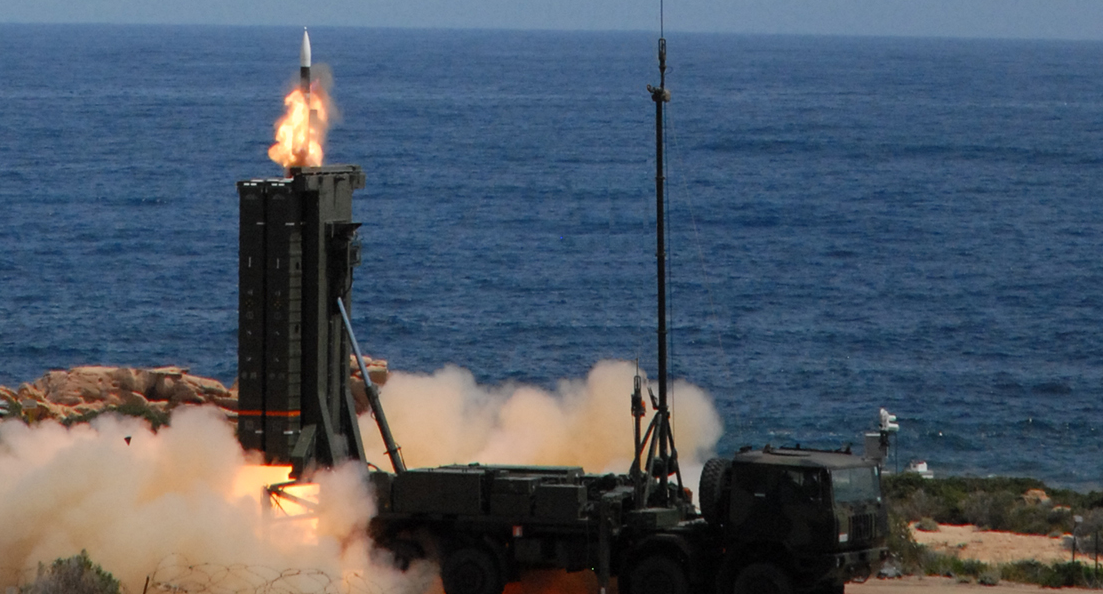2686Views 1Comment

Technical, tactical and political: Developments in defense logistics for 2018
By Evan Butler-Jones
Director, Defense Product Line, Aviation & Defense Business Unit, IFS
With ever-evolving equipment, budgets and geo-political landscapes, military organizations are having to constantly stay on top of technical, tactical and political developments happening in the defense sector. Moving in-sync with advances in all three can be the difference between fielding an effective fighting force or being caught flat-footed. All military stakeholders, from department officials to equipment manufacturers and in-service support providers, will need to watch out for and respond to movements on these three fronts in 2018.
- TECHNICAL: To cloud or not to cloud – developments in cyber-security will help boost military cloud adoption but under the watchful eye of regulations and export control
Due to overarching constraints around security, slow government investment and natural conservatism, the defense industry has traditionally lagged in the adoption of IT developments. The cloud is the latest one of these developments being debated for military use, which comes with its own concerns over cyber-security, data assurance and export controls.
Cyber-security and data assurance are closely linked. Due to the sensitivity of military information, defense organizations and defense departments are wary of critical data stored in the cloud being accessed by unauthorized personnel. Can its safety be guaranteed if it is held on a server owned by a commercial company?
On top of these concerns is the issue of export control and how organizations navigate frameworks and rulesets that they are bound by in the countries they operate in. According to Tech UK, export control not only applies to export of physical goods, “but also of software or technology by any means including the key point relevant to cloud computing – giving access to software or technology in electronic form to someone overseas”.
Despite these challenges, the US Military have been working on refining its cloud strategy to address information assurance and security concerns. In 2017, IBM announced it was working with the US Army to build and manage a secure private cloud data center. The DoD has also begun discussions with commercial information technology leaders around updating the rulebook that’s governed its security demands for firms that have provided it with cloud computing services.
In 2018, I expect to see more defense organizations follow the lead of the US DoD and look to the quick implementation, efficiencies and lean principles the cloud offers. This will be contextualized by the individual requirements of each organization. Organizations must find a solution which allows them to operate and adhere to country-specific frameworks, and decide whether a commercial or private cloud offering will be able to provide the appropriate level of security.
- TACTICAL: Re-evaluating in-service support risk: Contracting for availability
In recent years, mature defense forces have been moving from either the traditional ‘buy an asset and lots of spares’ model or repairs done by the Original Equipment Manufacturer (OEM) model, toward an end goal of contracting for capability with assets delivered on a service basis. In this scenario, the OEM owns and maintains the asset and the organization pays via a lease model.
There are several factors that explain this transformation, including changes in defense and security policies, reductions in defense expenditure, and participation in peace support operations. Alongside these, IT developments such as health usage monitoring systems (HUMS) and the autonomic logistics information system (ALIS) have revolutionized asset management and – at least in in industry environments – servitization models have shown huge efficiency improvements.
Moving from a traditional model to contracting for capability has not been framed as a one-step process. The UK MoD sets out a ‘transformational’ staircase model which includes four steps: traditional, spares inclusive, contracting for availability, and contracting for capability.
Contracting for availability is the third step on the transformational staircase. The defense organization owns the asset and the OEM or in-service support provider guarantees the asset is available. But the question many organizations may come to ask as they begin new projects and renew agreements in 2018 is if this model is a viable option.
Both axes on the staircase graph are about sharing risk between support provider and the defense organization. At the bottom of the staircase, the risk is mostly placed on the defense organization, which can quickly become unsustainable given the high cost and complexity of next-generation assets such as the F-35 or the Queen Elizabeth aircraft carrier, Britain’s largest ever warship.
It is in the best interest of military decision-makers to push risk as far as possible to the OEM or in-service support provider – meaning assets are always ready for operations without using military resources to keep them that way. Contracting for availability becomes a potential halfway house, with substantial risk still being placed on the military. This is hardly an ideal situation for a military officer who needs his force to be mission-ready at all times – how this is achieved should be the concern of support providers.
We are witnessing this rising trend among our own defense customers and expect to see a steady progression to new models as programs are put in place and contracts renewed during 2018.
- POLITICAL: Expect unexpected new partnerships amid changing political winds
One aspect out of the defense industry’s control is the triangular dynamic between the US, NATO and the European Union.
The last two decades have seen a period of stability between these three powers. Most of the world uses NATO common standards at present, but changes are taking place in the Northern hemisphere which will have knock-on effects to defense forces, OEMs and in-service support providers on a global scale.
There were high-profile recommendations from the US on NATO member defense spending in 2017, and there have been notable new equipment strategy changes from the UK and the European Union.
BAE Systems in the UK signed an agreement with Turkey Aerospace Industries to collaborate on a development program for the TAI TFX, a new twin-engine aerial superiority jet, set to be introduced in 2023.
With the UK forging its own path as a dominant European defense power after Brexit, other European defense powers are looking to collaborate with each other. In the summer of 2017, France and Germany announced plans to work together on a project to produce unmanned fighter jets that will eventually replace French-made Rafale Jets and the Eurofighter Typhoon.
Defense organizations will decide which equipment best fits their strategic requirements, while in-service support providers will realize the need to stay competitive by providing services which help new, often unexpected partnerships. The support of IT systems designed to cope with this change and adapt to multi-stakeholder environments becomes even more important.
The buying map in the defense industry is clearly shifting. As NATO spending continues to divide opinion and new equipment development programs evolve through 2018 and the following years, procurement and support will move towards a different, and increasingly complicated model.
The frontline developments changing defense logistics
Military decision-makers must make choices throughout the year ahead which will directly affect their fighting force. More organizations will consider the cloud as a viable option as cyber-security fears are eased, but only within the parameters and frameworks set out by each country they operate in. The procurement of equipment and maintaining it via the right support model will see firm developments as it starts to effect mission success, while new and unexpected partnerships will emerge as contractors adapt to a shifting political landscape.
About IFS: IFS is a global enterprise software vendor providing solutions that help companies get better return on investment. IFS has extensive knowledge of the aviation and defense industry. Independently recognized as a leading, global supplier of enterprise software, we provide solutions for: commercial aviation, defense, fleet and asset management, services and performance-based logistics, military logistics, and aviation and defense manufacturing. Our aviation and defense industry experts are committed to ensuring the future success of our customers by providing best-in-class solutions and industry expertise to prepare them for what’s next.
IMPORTANT: Guest contributions are article submissions from outside of Quwa. The views expressed in this article belong to the author and do not necessarily reflect the views and editorial policy of Quwa. If you would like to submit an article, please contact Quwa.




1 Comment
by Joseph
That is certainly an interesting thought. Software as a service has been popular in IT world, but defense as a service is probably new.
It makes sense somewhat, private companies are deemed more efficient and soldiers are the best at fighting wars, not managing increasingly complex modern military equipment. The main benefit would probably be cost reduction and possible improvement in service delivery, but trusting logistics of military to private companies could be a big step.
That kind of initiatives could also be popular politically. The conservatives might like it as it reduces the size of government, saves money.
I think one of the reasons union based political parties hate military is because military is not allowed to be unionised, except for civilian employees in defense department, not that there has been no trying: http://nationalpost.com/opinion/robert-smol-why-we-should-unionize-the-military
But it is of course possible for private defense company employees to join trade unions, so they might like it too. Then again what happens if these employees go on strike?